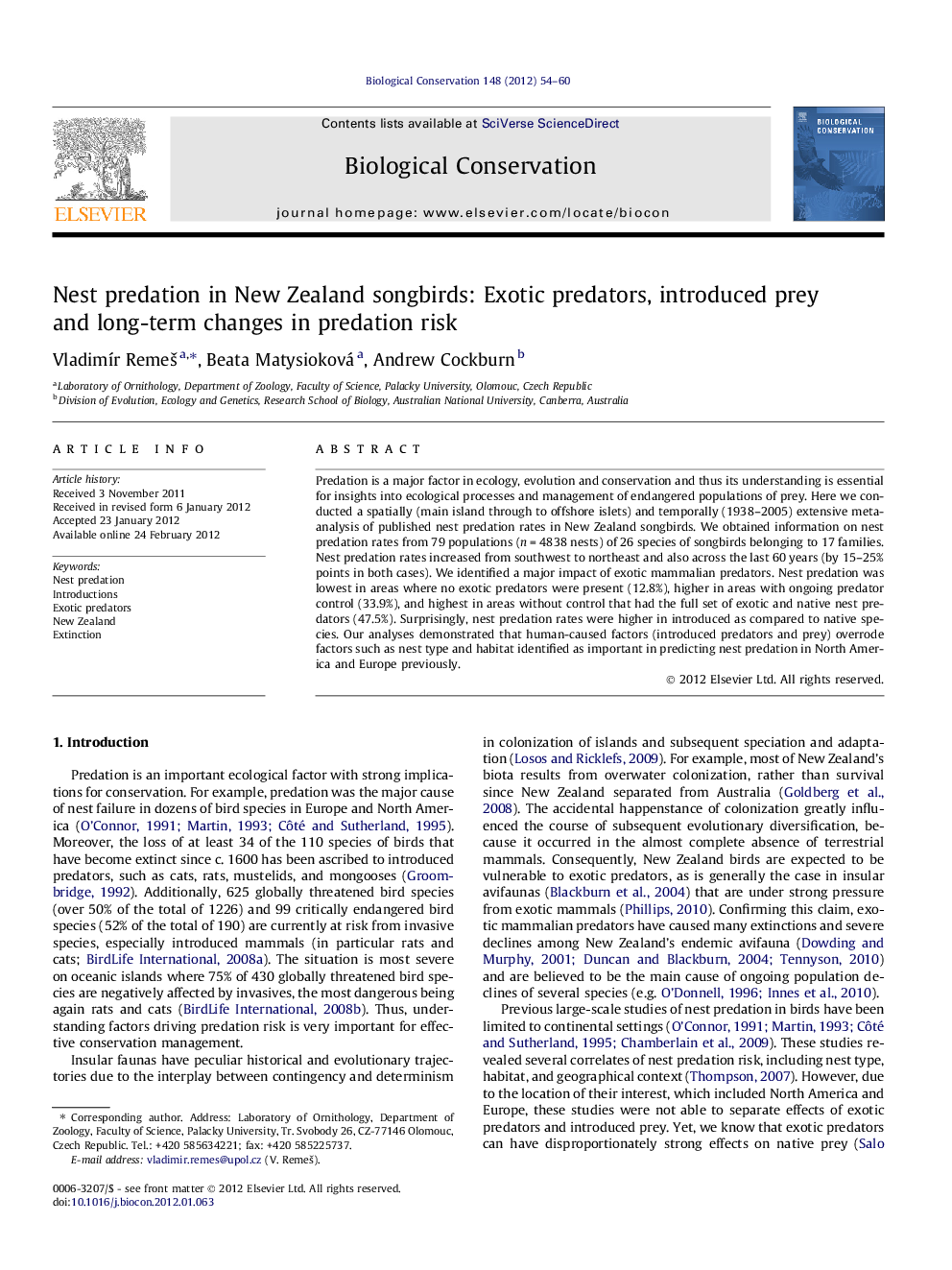| کد مقاله | کد نشریه | سال انتشار | مقاله انگلیسی | نسخه تمام متن |
|---|---|---|---|---|
| 4385493 | 1304540 | 2012 | 7 صفحه PDF | دانلود رایگان |

Predation is a major factor in ecology, evolution and conservation and thus its understanding is essential for insights into ecological processes and management of endangered populations of prey. Here we conducted a spatially (main island through to offshore islets) and temporally (1938–2005) extensive meta-analysis of published nest predation rates in New Zealand songbirds. We obtained information on nest predation rates from 79 populations (n = 4838 nests) of 26 species of songbirds belonging to 17 families. Nest predation rates increased from southwest to northeast and also across the last 60 years (by 15–25% points in both cases). We identified a major impact of exotic mammalian predators. Nest predation was lowest in areas where no exotic predators were present (12.8%), higher in areas with ongoing predator control (33.9%), and highest in areas without control that had the full set of exotic and native nest predators (47.5%). Surprisingly, nest predation rates were higher in introduced as compared to native species. Our analyses demonstrated that human-caused factors (introduced predators and prey) overrode factors such as nest type and habitat identified as important in predicting nest predation in North America and Europe previously.
► We conducted a metaanalysis of nest predation in New Zealand passerines.
► Nest predation was critically dependent on the presence of exotic predators.
► It increased by 15–25% points from south to north and from 1938 to 2005.
► Surprisingly, it was higher in introduced as compared to native species.
► Control of exotic predators and reversing the long-term trend are clear priorities.
Journal: Biological Conservation - Volume 148, Issue 1, April 2012, Pages 54–60